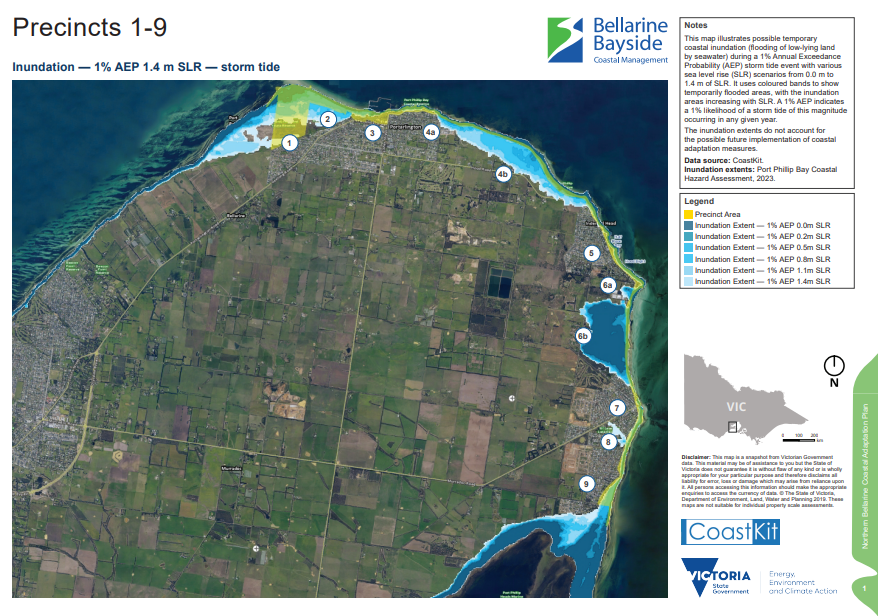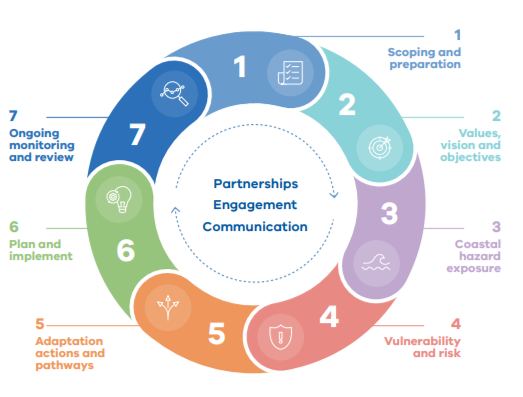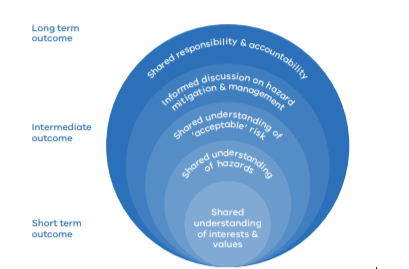Planning for our changing coast
The draft Coastal Adaptation Plan seeks to make us more aware and prepared for coastal hazards, to protect our precious coastline now, and in the future.
Coastlines are continually changing due to natural coastal processes such as tides, winds and waves. These natural events create coastal hazards, such as erosion and flooding or inundation of low-lying areas.
Under a changing climate, more frequent storm events, high tides, sea level rise and changes to wind patterns are predicted to increase the impact and severity of coastal processes along our coastline. These changes are expected to impact coastal values and how we use the coast.
A proactive and strategic approach to adapt to coastal hazards is required to ensure the values of the region are retained. Everyone has a role to play in adapting to change and building resilience to coastal hazards.
Victoria’s Resilient Coast - Adapting for 2100+ framework
We are taking a staged approach to plan for and manage coastal hazards along our coastline, now and into the future.
Our approach is following the direction of the Marine and Coastal Policy 2020 and Victoria’s Resilient Coast – Adapting for 2100+ framework and guidelines.
The framework recognises that alongside comprehensive and robust technical and strategic work, the planning and management of coastal hazards is a shared responsibility of rightsholders, community and stakeholders.
Scope of the Coastal Adaptation Plan
The Victorian marine and coastal environment supports a diversity of values and uses. Our Coastal Adaptation Plan (CAP) will consider the protection of these values and uses under different sea level rise and storm tide scenarios.
This includes:
- All 17 km of coastal Crown land under the management of Bellarine Bayside.
- Harvey Park in St Leonards: coastal Crown land managed by the City of Greater Geelong.
- Recognition of cultural values to support Wadawurrung Traditional Owners Aboriginal Corporation assertions for Country.
- The shared community aspirations for Victoria’s marine and coastal environment, as articulated in the Victorian Marine and Coastal Policy 2020 vision.
- Community aspirations around use and values along our coast.
The scope of the CAP does not include:
- Coastal hazard impacts on private land or private infrastructure.
Collaborative approach
We are developing the CAP in partnership with key stakeholders and agencies.
A project control group has been established to provide governance and oversight on the project from key funding partners. This has been supported by a project working group, which has provided key stakeholders with an opportunity to work closely with the project team and consultants to advise and comment on key stages of the project.
The project working group includes representatives from:
- Bellarine Bayside
- Wadawurrung Traditional Owners Aboriginal Corporation
- City of Greater Geelong
- Department of Energy, Environment and Climate Action
- Parks Victoria
Engagement
The planning and management of coastal hazards is ultimately the shared responsibility of Traditional Owners, land managers, state agencies, local government, land and asset owners, and the broader community.
To achieve and sustain the desired long-term outcome of shared responsibility and accountability (as shown in the diagram below), a collaborative engagement process is tailored to support adaptation planning at every stage.
While there are many steps involved in coastal hazard adaptation, understanding community knowledge and values of our coastline are at the heart of the process.
Diagram: Desired outcomes of community engagement in regards to coastal adaptation planning.
In stage 2 we sought to gather local knowledge that along with culture and environmental values will provide a foundation for confirming coastal values and objectives and feed into later stages of this project.
In this stage we assessed coastal hazard exposure for the study area, including hazard data / scenarios that enable best practice approaches to risk assessment and adaptation planning.
At stage 4 we explored place-based coastal hazard vulnerability and risk, to enable strategic consideration of adaptation needs/priorities.
The purpose of Stage 5 is to identify, assess, consult on and decide which adaptation options and actions are the most appropriate for managing the current and future coastal hazard risks in the study area. This includes a diversity of integrated actions across land management, planning and design, nature-based and engineering themes.
The purpose of Stage 6 is to confirm the action plan for coastal hazard risk management and adaptation and to start implementation. This includes clarifying priority actions, shared roles and responsibilities, triggers for review and resource requirements.
The purpose of Stage 7 is to ensure coastal hazard risk management and adaptation is accompanied by an ongoing monitoring and review process. This will enable effective implementation, shared knowledge, and improvement.
FAQs
Coastal Hazard Maps

Coastal hazard maps for each precinct showing inundation extent for each sea level rise scenario
CoastKit is Victoria's marine and coastal interactive web-mapping portal.
Other Resources
Relevant Policies and Guidelines
Traditional Owner Resources
Wadawurrung Traditional Owners Aboriginal Corporation's Paleert TjaaraDja Healthy Country Plan 2020-2030
Community Engagement
Local coastal projects
 The Coastal Adaptation Plan is supported by the Victorian Government through Victoria’s Resilient Coast Grants program.
The Coastal Adaptation Plan is supported by the Victorian Government through Victoria’s Resilient Coast Grants program.






